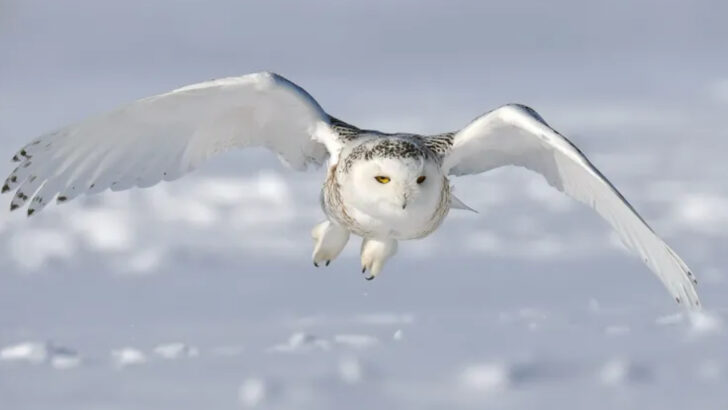Owls are not the wise, gentle creatures you think they are. They’re silent assassins, ruling the night with razor-sharp talons and eerie precision.
With the ability to rotate their heads almost completely around and eyes that don’t move, these birds have evolved into nature’s perfect night stalkers. And let’s not forget their ability to swoop down without making a single sound—bad news for anything scurrying below.
But there’s so much more to these mysterious birds than meets the eye. From their bizarre eating habits to the strange ways they communicate, owls are full of surprises.
Get ready to uncover 15 jaw-dropping facts that will forever change how you see these feathered hunters!
Silent Flight Mechanism
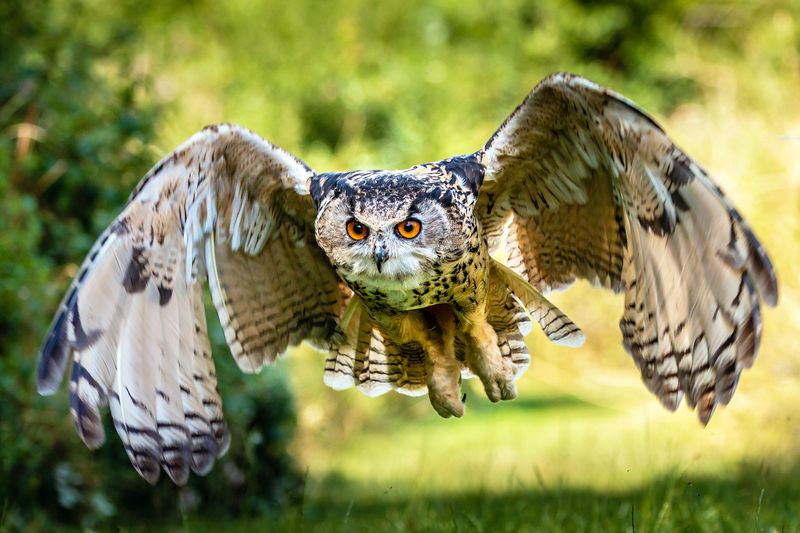
Owls possess a unique adaptation that allows them to fly silently, critical for hunting prey. Their wings and feathers have serrated edges that reduce turbulence, enabling stealthy movement. This adaptation is incredibly advantageous for sneaking up on unsuspecting prey during the night. The flight feathers also have a velvety texture, which helps to muffle sound further. This silent flight not only aids in their hunting success but also ensures owls can avoid detection by larger predators. The intricate design of their feathers is a marvel of nature’s engineering, perfectly suited for their nocturnal lifestyle.
Exceptional Night Vision
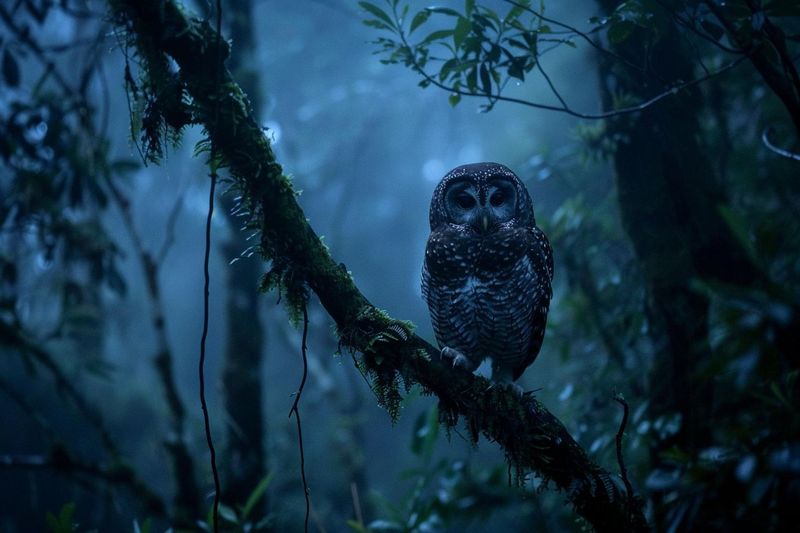
Owls have exceptional night vision, a necessary trait for their nocturnal lifestyle. Their large eyes are capable of capturing more light than those of other birds, allowing them to see clearly in the dark. Additionally, owls have a high number of rod cells in their retinas, enhancing their ability to detect movement in low light. This adaptation is crucial for spotting prey during nighttime hunting excursions. The eyes are so large that they are fixed in their sockets, requiring owls to rotate their heads to change their field of view. This enhances their ability to survey the environment thoroughly.
Flexible Neck Rotation
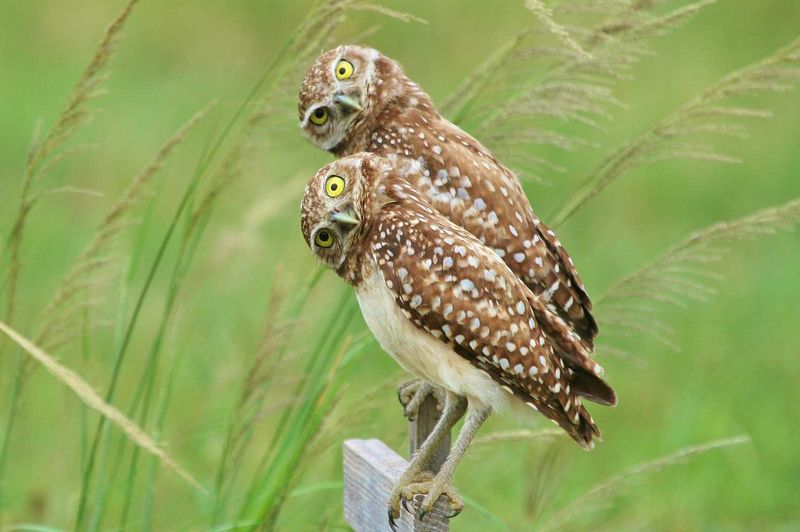
Owls are known for their incredible ability to rotate their heads up to 270 degrees. This flexibility is due to several adaptations, including a greater number of vertebrae in their necks compared to humans. They have specialized blood vessel systems that ensure uninterrupted blood flow to the brain, even during extreme head rotations. This remarkable flexibility allows them to maintain a wide field of vision without the need to move their entire body. It’s an essential trait that helps in spotting prey and keeping watch for predators. Such adaptations highlight the owl’s evolutionary success as a stealthy hunter.
Asymmetrical Ears for Sound Localization
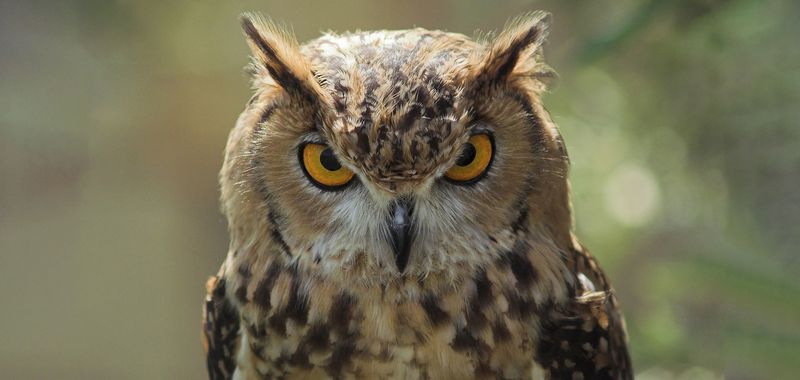
Owls have asymmetrically placed ears, an adaptation that greatly aids in pinpointing the location of sounds. This feature allows them to detect the direction and distance of noises with remarkable precision. The difference in ear positioning means that sound arrives at each ear at slightly different times, and this disparity is key in triangulating the source of a sound. This ability is vital for hunting, especially when tracking prey hidden under foliage or snow. The specialized ear structure of owls exemplifies their adaptation to nocturnal hunting, enabling them to hunt even the quietest of prey efficiently.
Varied Diet and Hunting Techniques
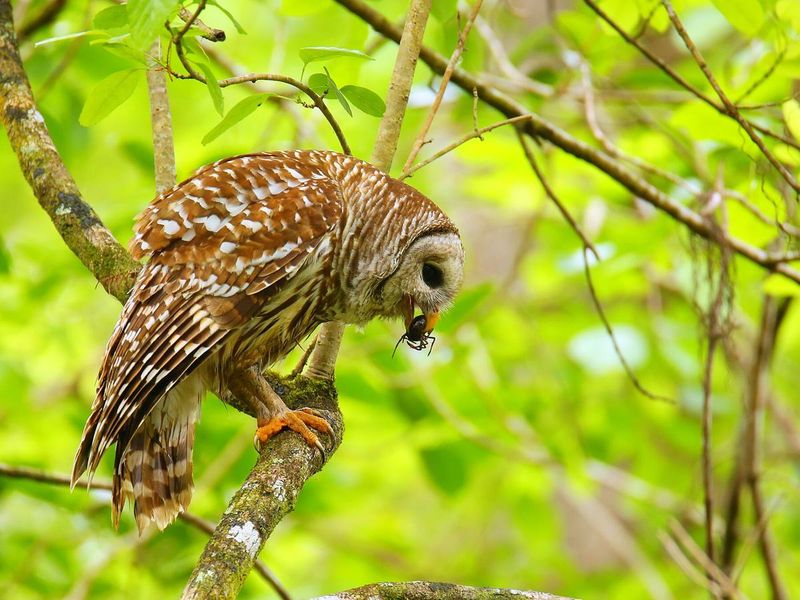
Owls boast a varied diet and employ diverse hunting techniques depending on their environment and prey availability. They primarily hunt rodents, but their diet can also include insects, fish, and even small birds. Their hunting strategies are as diverse as their diet, ranging from swooping silently from a perch to gliding low over open areas. Some species can even hunt in total darkness, relying solely on their acute sense of hearing. This adaptability in both diet and hunting methods allows owls to thrive in a wide range of habitats, from dense forests to open grasslands.
Camouflaged Plumage
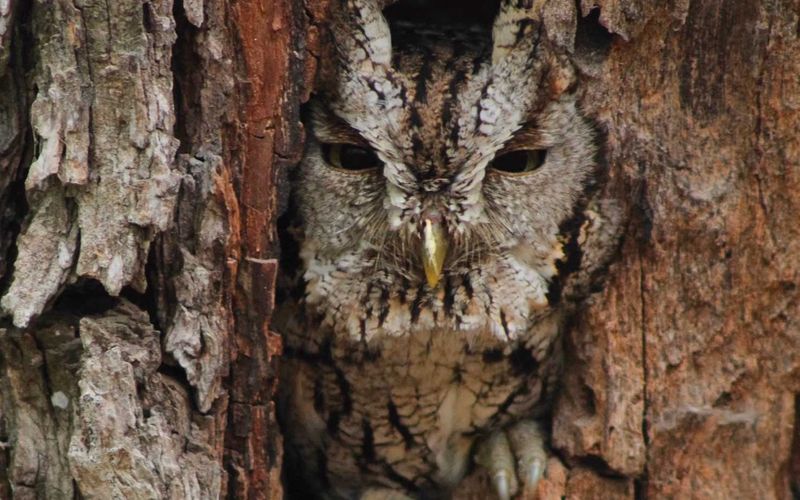
The plumage of owls is often perfectly camouflaged, allowing them to blend into their surroundings seamlessly. This camouflage is crucial for avoiding detection by both prey and predators. The feather patterns mimic the textures and colors of their environment, such as tree bark or leaves. This natural disguise helps them remain hidden during the day, when they are at rest. Additionally, the coloration of their feathers can vary significantly among species, adapted to specific habitats. This evolutionary trait not only aids in their survival but also highlights the incredible diversity of owl species across different regions.
Silent but Deadly Hunters
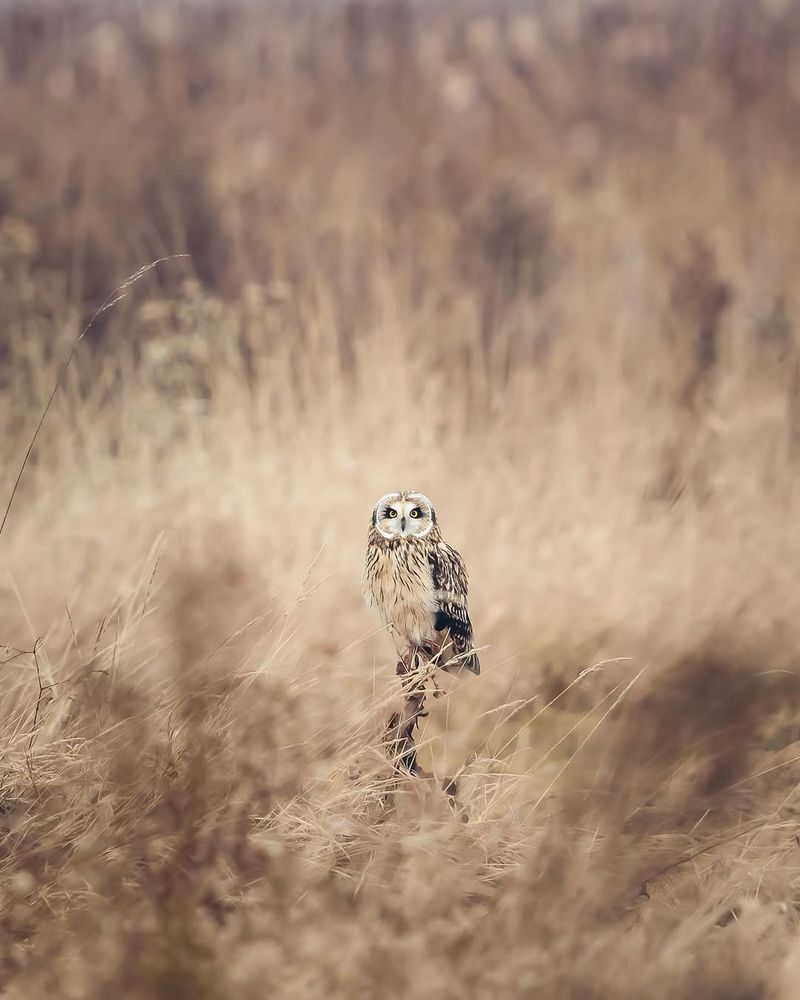
Owls are silent but deadly hunters, thanks to their unique adaptations. Their silent flight allows them to approach prey without being heard, while their strong talons and sharp beaks make a quick and efficient kill. This combination of stealth and power ensures their success as nocturnal predators. Their hunting strategy involves perching quietly before making a swift, calculated descent upon their target. The deadly efficiency of owls makes them one of the top nocturnal predators in their ecosystems. Observing an owl hunt is a testament to the precision and skill that characterize these remarkable birds of prey.
Owls’ Symbolic Meanings Across Cultures

Throughout history, owls have held significant symbolic meanings in various cultures. In ancient Greece, owls were associated with wisdom and the goddess Athena. Conversely, in some cultures, they were seen as omens of death or bad luck. Native American tribes often view owls as protectors of sacred knowledge. This symbolic diversity reflects the complex relationship humans have with owls, recognizing their mysterious nature and perceived supernatural qualities. The cultural significance of owls is as varied as their physical characteristics, making them a subject of fascination and reverence across the world. Their symbolism continues to inspire art and folklore.
The Role of Owls in Ecosystems
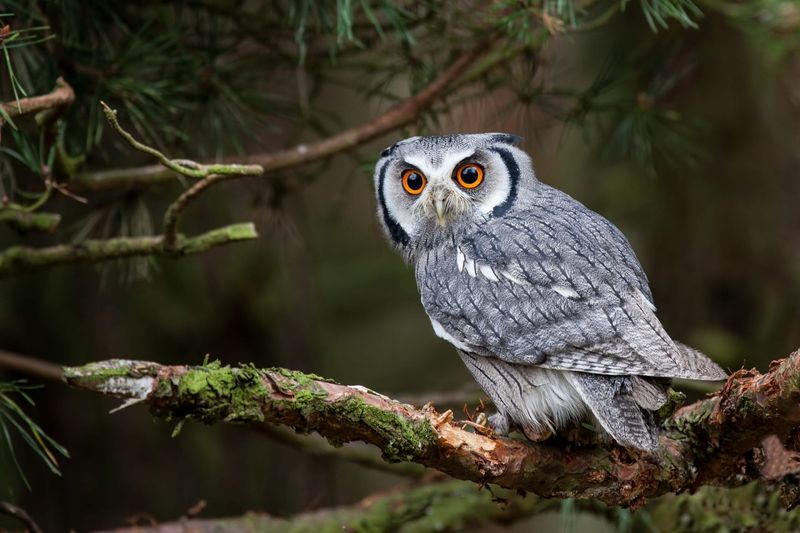
Owls play a crucial role in maintaining the balance of ecosystems. As top predators, they help control the population of rodents and other small animals, preventing overgrazing and the spread of disease. Their presence ensures a healthy and balanced food web, which supports biodiversity. By regulating prey populations, owls indirectly contribute to the health of plant communities and other wildlife. Their impact is especially noticeable in agricultural areas, where they help control pest populations, reducing the need for chemical pesticides. Owls serve as indicators of environmental health, reflecting the overall state of the ecosystems they inhabit.
Owls’ Unique Vocalizations
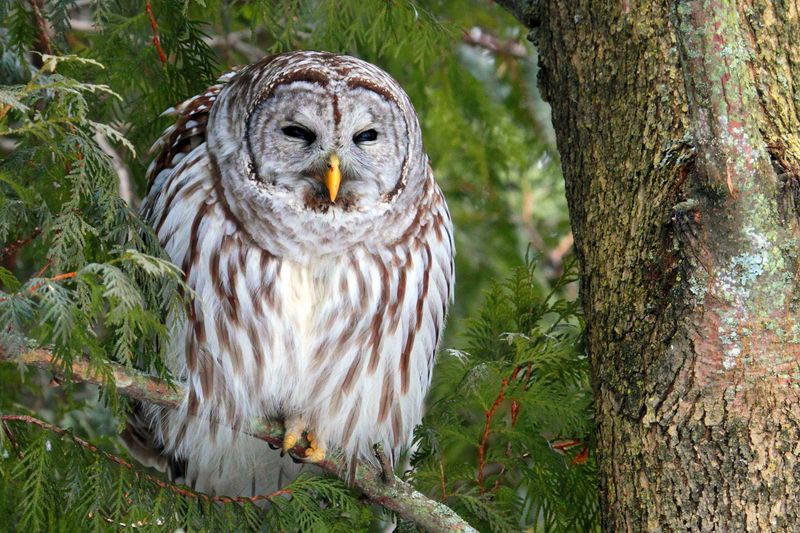
Owls are known for their distinctive vocalizations, which vary greatly among species. These sounds serve various purposes, from territorial calls to mating signals and communication with young. Some owls produce a classic hoot, while others may screech or whistle. These vocalizations are essential for maintaining social structure among owl populations. Interestingly, the calls of some species can be heard over long distances, thanks to their low-frequency range. This ability to communicate effectively is vital during nocturnal hours when visual contact is limited. The diversity of owl calls is a fascinating aspect of their biology, reflecting their adaptability and social behaviors.
Daytime Roosting Habits
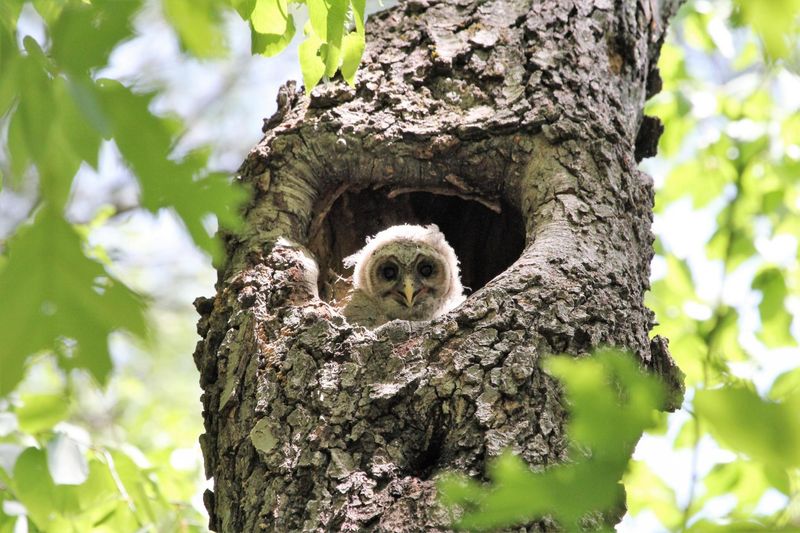
During the day, owls typically roost in secluded locations, often choosing sites that provide adequate shelter and camouflage. These roosting habits are essential for avoiding detection by predators and disturbances. Owls may select dense foliage, tree hollows, or rock crevices as their daytime retreats. Their plumage offers excellent camouflage, blending seamlessly with the environment, further enhancing their invisibility. This behavior is crucial for conserving energy, as owls are primarily active at night. Understanding their roosting habits provides insight into how they manage energy expenditure and stay safe when not actively hunting or foraging.
Owls’ Lifespan and Reproduction
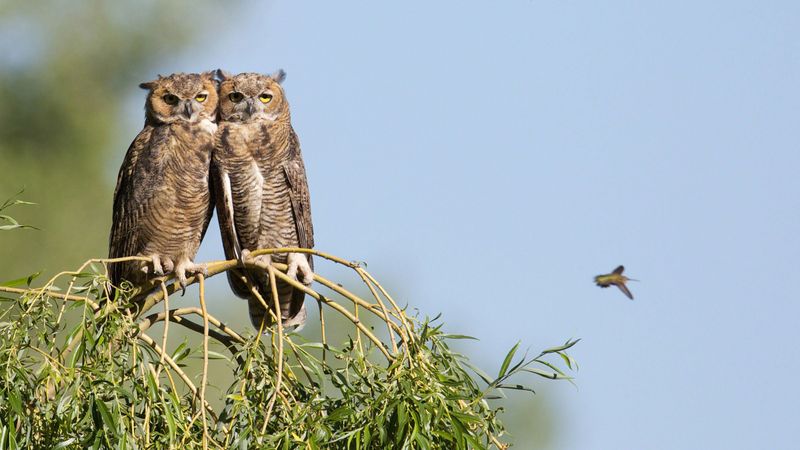
Owls have varied lifespans depending on their species, with some living over 20 years in the wild. Reproduction and parenting are vital aspects of their life cycle. Most owls are monogamous, forming long-term pair bonds. They typically nest in tree cavities, cliffs, or even abandoned nests of other birds. The female lays eggs, and both parents take part in incubation and feeding the chicks. After hatching, the young may remain dependent on their parents for several weeks before fledging. The investment in offspring ensures the continuity of owl populations and highlights their role in maintaining ecological balance.
Owls’ Fascinating Fossil Record

Owls boast a fascinating fossil record that provides insight into their evolutionary history. Fossils have been discovered that date back millions of years, revealing how these birds have adapted to various environmental changes over time. This ancient lineage highlights their resilience and ability to survive in diverse habitats throughout history. The fossil record includes giant species, now extinct, that once roamed prehistoric landscapes. Studying these fossils helps scientists understand the evolutionary pressures that shaped owls’ unique characteristics, such as their silent flight and nocturnal habits. The fossil record is a testament to the enduring legacy of these remarkable birds.
Owls in Literature and Art
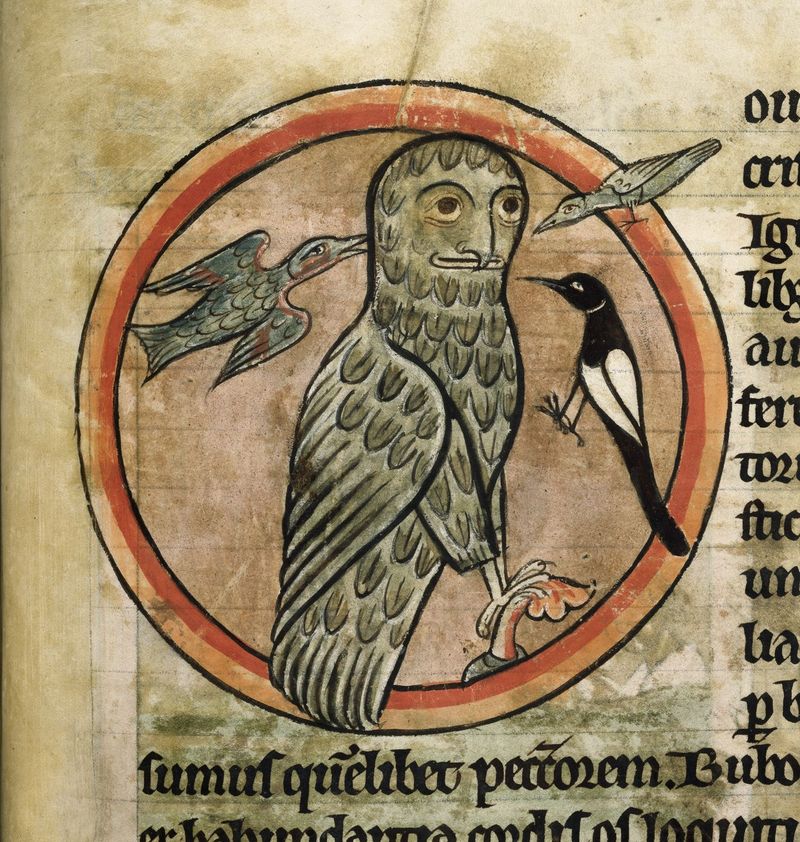
Owls have been a source of inspiration in literature and art for centuries, often symbolizing wisdom and mystery. They appear in ancient myths, children’s stories, and classic literature, capturing the imagination with their enigmatic presence. Artists have depicted owls in various forms, from realistic portraits to abstract interpretations, showcasing their beauty and mystique. This artistic fascination reflects humanity’s enduring curiosity about owls and their symbolic significance. From the wise owl in Aesop’s fables to the haunting imagery in Van Gogh’s paintings, these birds continue to inspire creativity and convey deeper meanings in human culture.
Owls’ Adaptation to Climate Change
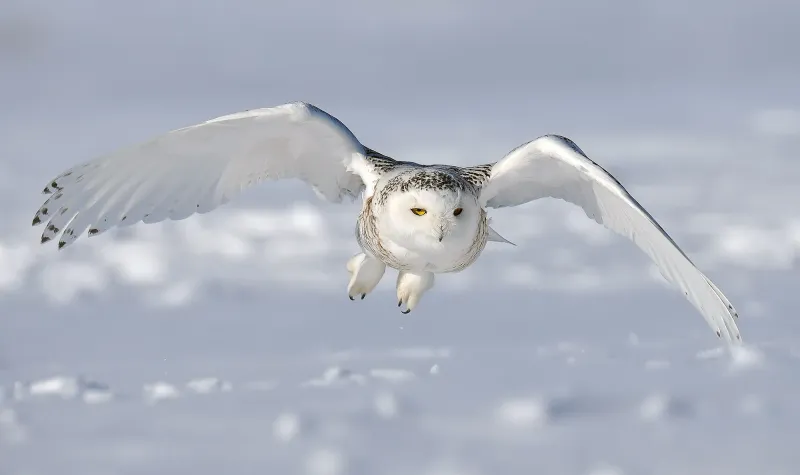
Owls face challenges due to climate change, but their adaptability offers hope for survival. Changes in temperature and habitat distribution affect their prey availability and breeding patterns. Some species have adapted by altering their hunting strategies or shifting their ranges to find suitable conditions. Conservation efforts play a crucial role in supporting these adaptations, ensuring that owl populations remain stable. Understanding how owls cope with climate change provides valuable insights into their resilience and the broader implications for ecosystems. These adaptations are vital for the continued success of owls in an ever-changing world. Their story is one of survival and adaptation.

